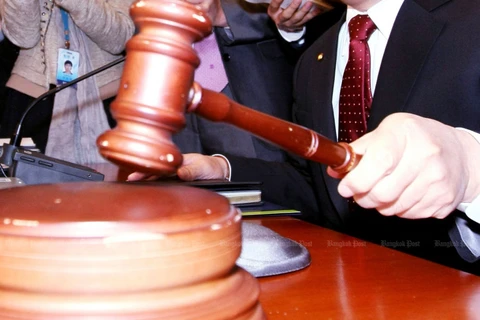
Bangkok (VNA) – The sea of mud left behind on roads and in houses by the devastating flooding in early September, in Mae Sai district of Thailand's Chiang Rai is posing a big headache for officials who are racing against time to rehabilitate this key border town so the people’s lives and businesses can resume.
Many residents, particularly those living in the low-lying areas, are still unable to return to their houses even though the floodwater has already receded because the houses and road access to them are still clogged with mud. The non-profit Mirror Foundation has, however, recently come up with a way of temporarily solving the mud problem.
The idea is to dig a hole, about 5-6 metres deep and 4x4 metres across, to be used as a temporary storage place for the mud, before it is moved elsewhere for disposal.
Elsewhere in Mae Sai township, officials and volunteers have been busily reinforcing embankments along the Sai river, behind the Sai Lom Joi market, as a precautionary measure ahead of more rainfall in the next few days, as predicted by the Meteorological Department.
Meanwhile, the Bangkok Metropolitan Administration has sent a few mud extraction trucks and about 20 men to help in removing mud and muddy water in Mae Sai.
According to the Thai Chamber of Commerce (TCC), the recent flooding in Thailand’s 33 northern and northern provinces has caused damage to the agricultural, industrial, and service sectors estimated at about 30 billion THB ( 920.6 million USD), accounts for 0.17% of the country’s GDP.
About 480,000 hectares were damaged, including 192,000 hectares of farm land. The damage to farm land is estimated at 24.5 billion THB, 5.12 billion THB for the service sector, and about 171 million THB for the industrial sector.
The three worst-affected provinces are Chiang Rai, estimated at about 6.4 billion THB, Phayao, about 3.2 billion THB and Sukhothai, about 3 billion THB.
In anticipation of more rain this month, which may cause more flooding, the government is urged to take steps in advance to mitigate the impacts on the people, property, and the economy in general.
Meanwhile, Vichai Assarasakorn, TCC vice chairman, urged the government to review its infrastructure and water management strategy to address the twin problems of flooding and drought which are now more frequent and extreme./.






















